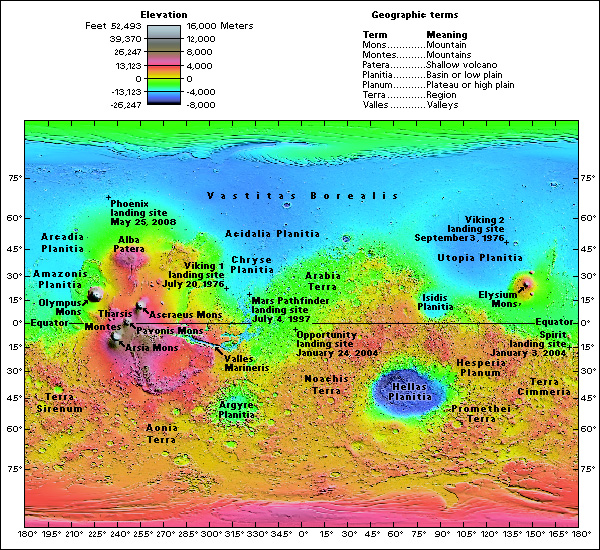Phoenix is a spacecraft sent to Mars to study the history of water on the planet. The Phoenix mission was also designed to investigate whether life could survive in the Martian arctic region. The United States National Aeronautics and Space Administration (NASA) launched Phoenix on Aug. 4, 2007. Phoenix operated from May to November 2008. The craft’s landing site lies at about 68° north latitude—about as far north on Mars as northern Alaska is on Earth.

Unlike some other spacecraft that have landed on Mars, Phoenix was not designed to move around the planet. Instead, it remained at its landing site, performing chemical analyses and other experiments.
Scientists chose to send Phoenix to Mars’s northern polar region for a few reasons. Most importantly, the planet’s north polar cap contains the largest source of water ice visible on Mars. The Martian arctic also has frozen water under its top layer of soil. This ground somewhat resembles the permafrost (permanently frozen ground) found in cold regions of Earth. Phoenix conducted its studies for about five months during the region’s summertime, when the water-ice portion of the cap is uncovered. During winter, when temperatures drop, the water-ice is covered by frozen carbon dioxide, sometimes called dry ice.
The chosen landing site lies in an ideal area for studying whether the soil and ice can support life. Researchers think that temperatures there may get high enough during the day to melt a small amount of ice into liquid water. Scientists consider liquid water essential for life. But some microorganisms (tiny living things) on Earth can use even small amounts of water to grow and reproduce, suggesting that similar life could survive on Mars. Also, the north polar region of Mars gets warmer and colder in a cycle that repeats about every 100,000 years. As a result, the region may once have had more liquid water available than it does today.
The Phoenix lander carried several scientific instruments. Its robotic arm dug into the soil and ice and collected samples for delivery to two instruments called analyzers. One analyzer heated the material in tiny ovens and studied its chemical makeup. The other analyzer included small chambers where samples were mixed in warm solution for study. The robotic arm also placed a probe into the Martian dirt to measure any liquid water. Phoenix also has cameras to study the surrounding area and closely examine dirt particles. In June 2008, the lander confirmed the presence of water ice under the surrounding soil. Until its mission end, the lander continued to reveal the identity of substances in the soil around it.
The Phoenix mission forms part of a broader effort within NASA’s Mars Exploration Program to study evidence of water on Mars. Scientists hope this evidence will help them understand how the planet has changed over time and whether it supports life or could have done so in the past. The results of the Phoenix mission may guide where on Mars future spacecraft are sent and what studies they will make.
See also Mars (Polar deposits); Space exploration (Exploring Mars).
